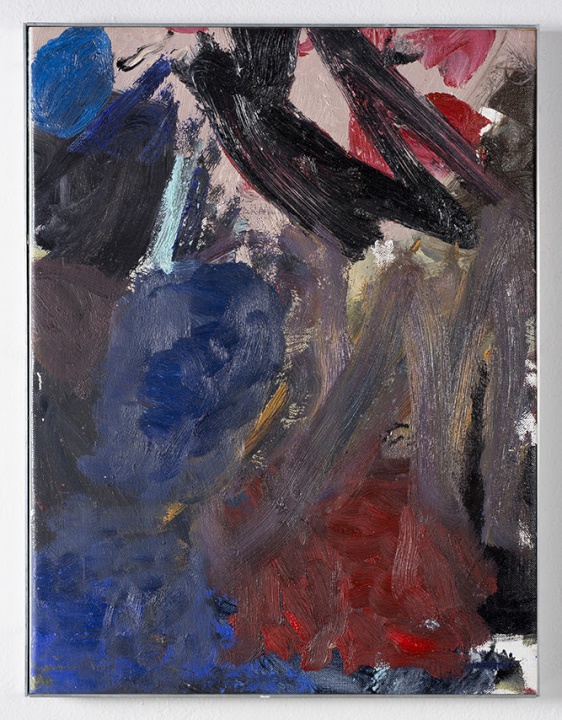Oscar Perry The Pheasant, Sydney Contemporary 7-10 September
Oscar Perry, The Pheasant, Sydney Contemporary, 7-10 September

The Pheasant continues Oscar Perry’s practice of situating his paintings within a narrative and semi-performative framework that blends together history, fiction, mythology and popular culture. Taken on their own, Perry’s paintings are compelling abstract studies, but situated within the context the artist manufactures around them, they become “shipwreck paintings. Jacob’s Island mud paintings. Tannery paintings, dirty rag/drop-cloth paintings, countryside paintings, changing weather paintings. Miner’s paintings, table-top beer drawing paintings. Football tactics paintings, sewer map paintings [and] forgotten joke paintings.” The artist’s suggestion that these works are, in fact, containers for descriptive meaning cuts against the grain of the historical goals of abstract painting, but this is perhaps the crux of Perry’s statement: that language and information have a power to transform the way we interpret our perceptions of the world that overrides any mere act of looking.
While developing these contextual narratives, Perry often creates supplementary characters and personae. The artist describes the impetus behind this project in these terms: “I had an image of a bored bartender one afternoon at this fictional pub 'The Pheasant.' While looking around the dark empty room he starts to daydream about the different paintings on the wall.” The bartender’s dream—like the dream of the publican Earwicker in Finnegans Wake—becomes an all-consuming cavalcade of references, transforming the “shipwrecks, peasant revolts, scenes of wood chopping, fox hunting, carnivals, and historic battles” on the pub’s walls into oneiric abstractions that are also “portals,” inspired by Ray Bradbury’s 1951 novel The Illustrated Man. The titles of the individual works reflect the disparate nature of these historical and cultural “portals,” from the tongue-in-cheek (The world’s most offensive fridge magnet) to the to the cryptic (Because vermouth is fortified, an opened bottle will not sour as quickly as white wine/The long and the short of it), sounding like snatches of conversation filtered through the noise of a busy pub.
Although Perry refers to this group of works as “parlour paintings,” their domestic scale belies a wide-reaching raft of geographical and art-historical connections. Perry’s starting point—imagining the paintings on the wall of an old-fashioned pub—leads into an exploration of the locations that might be adjacent to such a pub: Jacob’s Island and the River Neckinger. Perry cites these London sites as part of the narrative background from which The Pheasant emerges: Jacob’s island was an area of the city memorably described by Charles Dickens in Oliver Twistas containing “every repulsive lineament of poverty, every loathsome indication of filth, rot, and garbage.” Flowing into the Thames near the former site of Jacob’s Island (it was extensively bombed during World War Two) is the River Neckinger, which is now completely enclosed and built over, running under the streets and buildings of the city. This primal, subterranean urban current flows into Perry’s work, manifesting itself in the idea of a diffuse, proletarian culture translating itself from England to Australia, in Perry’s words a “long, strange, interconnected history: from music hall entertainers and pickpockets to football hooligans and drunk journalists.”
Also important to Perry’s schema are an idiosyncratic group of artistic figures: Ian Fairweather, Georgiana Houghton, and the Ashington Group. The common theme between the three is their dual status as artists and as something else: Fairweather was a respected painter who also sailed to Indonesia on a home-made raft, while Georgiana Houghton was a spiritualist medium who contextualised her artworks as the products of séances, and the Ashington Group was composed of self-taught artists who were also coal miners. These influences play into the process whereby Perry created this group of works, which he likens to “moving spilt beer around a bar-top with your finger, or tearing the felt on a snooker table during a jump shot.” Like a medium receiving messages through automatic drawing, or an artist’s raft adrift on the ocean, The Pheasant points towards a conception of painting as lucid dreaming, a way of processing and responding to the informational deluge of the contemporary psychic landscape.
ENDS


 Journal Of Public Health: Vape Shops Cluster Around Schools
Journal Of Public Health: Vape Shops Cluster Around Schools Timaru District Council: Aigantighe Art Gallery Hosts An Iconic Robin White Touring Exhibition
Timaru District Council: Aigantighe Art Gallery Hosts An Iconic Robin White Touring Exhibition Victoria University of Wellington: Dame Winnie Laban Awarded Honorary Doctorate Recognising Achievements For Pasifika
Victoria University of Wellington: Dame Winnie Laban Awarded Honorary Doctorate Recognising Achievements For Pasifika  HESSA: This Isn’t Fair—And It’s Time To Fix It - HESSA Petition Calls For Inclusive Student Sports
HESSA: This Isn’t Fair—And It’s Time To Fix It - HESSA Petition Calls For Inclusive Student Sports Post Primary Teachers' Association: PPTA Calls On Minister Stanford To Come Clean On Kāhui Ako
Post Primary Teachers' Association: PPTA Calls On Minister Stanford To Come Clean On Kāhui Ako  Arts Access Aotearoa: Kim Anderson Awarded Deaf And Disabled Artists Fellowship 2025
Arts Access Aotearoa: Kim Anderson Awarded Deaf And Disabled Artists Fellowship 2025